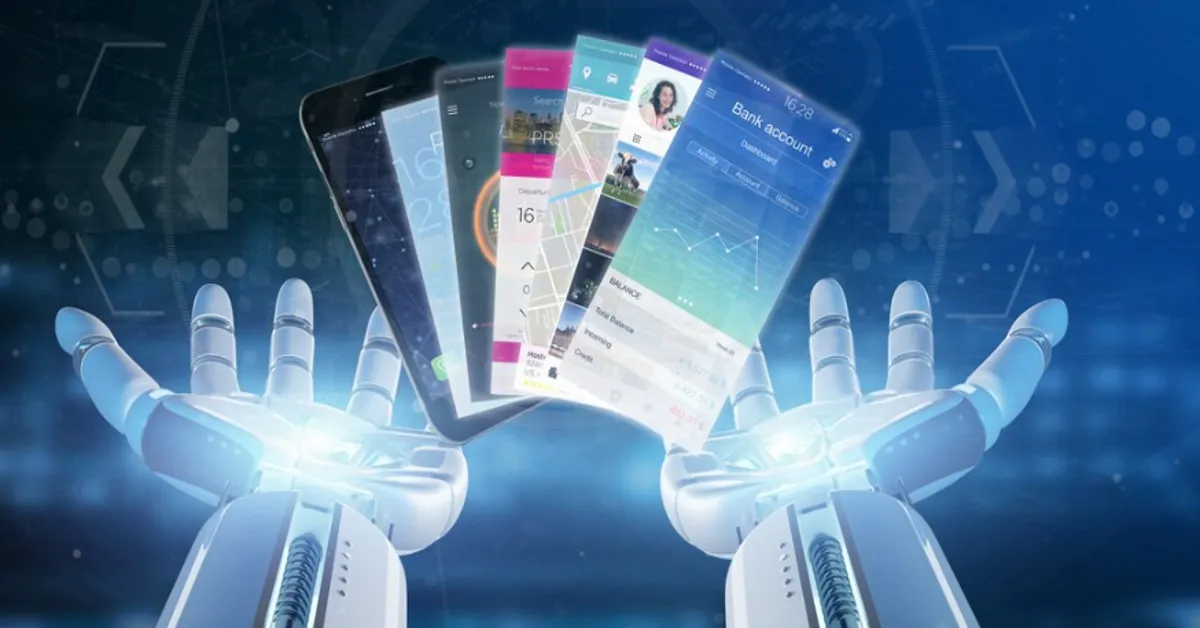Tech giants are quietly preparing for a world where smartphones are no longer the center of our digital lives. While phones have been the dominant consumer technology for over a decade, companies like Apple, Google, Meta, Microsoft, Samsung, and Amazon are heavily investing in technologies that push computing away from handheld screens. Whether it’s augmented reality glasses, ambient AI, brain-computer interfaces, or intelligent wearables, these companies aren’t just imagining a future without smartphones—they’re building it – Tech Giants Envision Future Beyond Smartphones.
This article explores how major technology companies are charting paths into a post-smartphone era, what tools and platforms are emerging, and what this means for the everyday consumer – Tech Giants Envision Future Beyond Smartphones.
Why Move Beyond the Smartphone?
Smartphones are ubiquitous, powerful, and deeply embedded in our daily routines. But for the very companies that made them indispensable, smartphones now represent a plateau. Growth has slowed. Innovation in hardware is incremental. And people are spending less time and money upgrading.
But even more pressing are new user expectations and technical opportunities. Consumers want hands-free, seamless access to information. The hardware is catching up to the software. Voice recognition, gesture control, spatial computing, and on-device AI all point toward computing that adapts to us, not the other way around.
The Big Tech Blueprint: Company Visions Beyond the Phone
The move away from smartphones isn’t a singular vision. Each tech giant is pursuing its own strategy based on its strengths, consumer base, and ecosystem – Tech Giants Envision Future Beyond Smartphones.
| Company | Primary Post-Smartphone Focus | Flagship Effort or Product |
|---|---|---|
| Apple | Wearables, AR glasses, ambient computing | Vision Pro, Apple Watch Ultra, Siri intelligence |
| AI, ambient computing, lightweight AR | Project Astra, Android XR, Fitbit, Gemini AI | |
| Meta | Virtual/augmented reality, digital identity | Quest headsets, Ray-Ban Meta glasses, Horizon OS |
| Microsoft | Enterprise-focused XR, productivity AI | HoloLens, Copilot, mesh collaboration tools |
| Amazon | Voice-first, home-centric AI | Alexa, Astro robot, ambient smart home |
| Samsung | Foldables, wearables, platform convergence | Galaxy Ring, Galaxy XR platform |
Each approach is unique, but all hint at a future where the screen in your hand is no longer the portal to the internet—instead, computing becomes embedded, wearable, and contextual.
Apple: Seamless Intelligence Wrapped Around the Body
Apple’s post-smartphone vision centers on the human body as the interface. With products like the Apple Watch, AirPods, and the forthcoming Vision Pro headset, Apple is constructing an ecosystem where intelligence wraps around your wrist, enters your ears, and hovers in front of your eyes.
The Apple Watch has already absorbed many functions once exclusive to iPhones—calls, navigation, health monitoring, payments. AirPods do the same for voice and spatial audio. The Vision Pro, meanwhile, represents Apple’s most daring shift: a spatial computer where apps float in real space, controllable with eyes and gestures.
But the goal isn’t to replace the iPhone overnight. It’s to fragment its functionality into multiple, more intuitive devices. As AI becomes more capable, Apple aims to reduce friction in user interactions—fewer taps, more context-aware computing, more natural interfaces.
Google: The Age of Ambient Intelligence
Google is betting big on AI and ambient computing—the idea that devices should fade into the background while still delivering information when needed. Project Astra, demonstrated in 2024, showed a real-time AI assistant capable of seeing, understanding, and responding through camera-equipped devices.
Instead of centralizing everything on a smartphone screen, Google envisions AI distributed across smart glasses, watches, speakers, and home devices, all linked through Gemini, its multimodal AI model. The Pixel ecosystem increasingly reflects this shift: Tensor-powered devices prioritize real-time processing, transcription, and proactive suggestions.
Wearables like Fitbit, Nest smart home devices, and Android Auto are all being tied together under a unified, AI-driven vision. Google doesn’t want you to open an app. It wants your environment to know what you need, when you need it – Tech Giants Envision Future Beyond Smartphones.
Meta: A Social Future in Augmented Space
Meta’s long-term goal is bold: replace smartphones with mixed reality platforms. The Meta Quest and Ray-Ban Meta smart glasses are steps toward what CEO Mark Zuckerberg calls “the next computing platform.” Unlike Apple’s premium, productivity-driven headset, Meta focuses on affordability and everyday social interaction.
Meta’s Horizon OS is designed to let people work, play, and connect in immersive or augmented environments. In 2025, the company doubled down on smart glasses, introducing features like live streaming, voice control, and AI-powered personal assistance—all without needing to reach for a phone.
For Meta, the future is always-on identity, persistent avatars, and shared virtual spaces. Instead of staring at your phone alone, you’re in a world where the internet is projected around you—and your social circle can join you there.
Microsoft: The Enterprise Shift to Spatial Work
Microsoft’s departure from consumer phones opened the door for a focus on productivity and enterprise XR. The HoloLens may not have reached mass consumer adoption, but in enterprise, engineering, and healthcare sectors, it remains a critical tool.
Microsoft’s real strength lies in AI-powered productivity tools, such as Copilot in Microsoft 365. Imagine a world where your digital assistant prepares your meeting room, transcribes your thoughts, or augments your workspace in real-time.
With mesh collaboration and spatial avatars, Microsoft envisions a post-phone world not just as augmented reality, but as augmented work—where your ideas take spatial form, your colleagues appear next to you, and your tasks move beyond 2D – Tech Giants Envision Future Beyond Smartphones.
Amazon: Voice, Home, and Automation
Amazon has never truly broken into the smartphone market—but that’s by design. Its post-smartphone vision focuses on the smart home, voice-first interaction, and automation. Alexa, Ring, Echo Show, and even its Astro home robot are all facets of a system that removes the need for screens.
Amazon’s goal is to embed intelligence into your house, so that you can say “Alexa, dim the lights and start the movie” without reaching for anything. With AI-enhanced routines and contextual learning, Alexa is evolving from voice assistant to home-based ambient AI.
Their wearable efforts, including the now-retired Halo, show a continued interest in health monitoring, privacy-conscious wearables, and passive data collection. The phone isn’t the center anymore—the home is.
Samsung: Flexibility in All Forms
Samsung straddles multiple strategies. With its foldables, like the Galaxy Z Fold and Z Flip, it tries to extend the smartphone era by making phones more versatile. But it’s also investing heavily in wearables (Galaxy Watch, Galaxy Buds), ring-based computing (Galaxy Ring), and even XR (in partnership with Google and Qualcomm).
Samsung thrives by moving fast and iterating broadly. Its wearables now support health tracking, gesture input, and AI assistants. Its new XR platform aims to bridge mobile and immersive computing—suggesting that the post-smartphone world might not ditch phones, but stretch them into new forms.
The Emerging Pillars of Post-Smartphone Computing
Across companies, five major trends define the coming landscape:
1. Wearable Interfaces
Smartwatches, rings, earbuds, glasses—our bodies become the interface. These devices offer health tracking, voice control, haptics, and even gesture recognition.
2. Ambient AI
Instead of interacting through apps, users get context-aware suggestions, responses, and services that are always available but rarely intrusive.
3. Spatial Computing
Information is no longer trapped in screens—it surrounds us in 3D space. Spatial computing reimagines UI/UX entirely, whether through headsets or holograms.
4. Privacy-Conscious Local Processing
Post-smartphone devices will process more data locally. With rising concerns about surveillance, local AI ensures faster, more private computing.
5. Interoperability and Ecosystems
Devices need to work together. Whether you’re in your car, home, or on a bike trail, your wearables, voice assistants, and displays must communicate seamlessly.
Challenges to Overcome
While visions abound, reality is more complex. Tech giants face several hurdles:
- Battery Life: Smaller, always-on devices are power-hungry.
- Form Factor: Smart glasses must be stylish, lightweight, and socially acceptable.
- AI Maturity: Assistants must move beyond commands to understanding intent, emotion, and context.
- Privacy & Ethics: As computing gets closer to the body, concerns around consent, surveillance, and data use intensify.
- Developer Ecosystems: Without strong third-party apps, even the best hardware will stagnate.
A Timeline Toward the Post-Smartphone World
| Year | Key Milestones |
|---|---|
| 2020 | Mainstream adoption of smartwatches, AirPods, and foldable phones |
| 2023 | Meta launches next-gen Ray-Ban glasses with voice, camera, and AI |
| 2024 | Apple Vision Pro debuts; Project Astra demo sets new AI benchmark |
| 2025 | Google, Samsung, and Apple expand wearable AI ecosystems |
| 2026–2028 | First lightweight AR glasses go mass-market; AI assistants gain autonomy |
| 2030 | Smartphone usage begins to decline as primary computing tool |
What Consumers Should Expect
Consumers shouldn’t expect smartphones to disappear overnight. Instead, the shift will happen gradually, with features peeling off and migrating to:
- Smartwatches (for health, messaging, payments)
- Smart glasses (for navigation, camera, AR)
- Smart homes (for control, reminders, assistance)
- Voice and ambient AI (for everyday tasks and information)
Ultimately, the user’s role will become less about controlling devices and more about being supported by them.
Conclusion: A Future Less Screened, More Seen
The post-smartphone future isn’t just about replacing a device—it’s about reimagining how we live with technology. Tech giants are no longer fighting over screen size or refresh rate. They’re competing for your attention in the real world—through your eyes, your ears, your voice, your surroundings.
It’s a vision of computing that’s quieter, more intuitive, and possibly more humane. But it’s also fraught with challenges—technical, ethical, and personal.
As Apple, Google, Meta, Microsoft, Amazon, and Samsung push forward, the question becomes not whether smartphones will fade—but what we’re willing to trade for the next phase of digital life. Convenience? Privacy? Autonomy?
The future may not fit in your pocket—but it’s coming all the same.
FAQs
1. Why are tech companies moving beyond smartphones now?
Tech companies are transitioning beyond smartphones because the mobile market has plateaued, and users increasingly demand more intuitive, hands-free, and seamless digital experiences. With advances in AI, wearables, and spatial computing, the conditions are right for a new paradigm of personal technology.
2. What technologies are replacing the smartphone in these future visions?
Key technologies include augmented reality (AR) glasses, AI-driven assistants, wearable devices (like smartwatches and rings), and ambient computing that blends into home and work environments. These tools aim to reduce screen dependency and make interactions more natural and context-aware.
3. Will smartphones disappear completely in the future?
No, smartphones are unlikely to vanish overnight. Instead, their role will gradually diminish as core functions are distributed across a broader ecosystem of devices—like watches for communication, glasses for navigation, and voice assistants for everyday commands.
4. What are the biggest challenges facing this post-smartphone transition?
The shift faces several hurdles, including battery limitations, privacy concerns, AI maturity, hardware design constraints, and the need for strong developer ecosystems. Without user trust and functional design, these innovations risk becoming niche rather than mainstream.
5. How should consumers prepare for a post-smartphone future?
Consumers should stay informed about emerging wearables, prioritize privacy in connected devices, and experiment with new technologies (like smartwatches or voice assistants) that align with their lifestyle. Gradual adoption will ease the shift as ecosystems become more cohesive.











